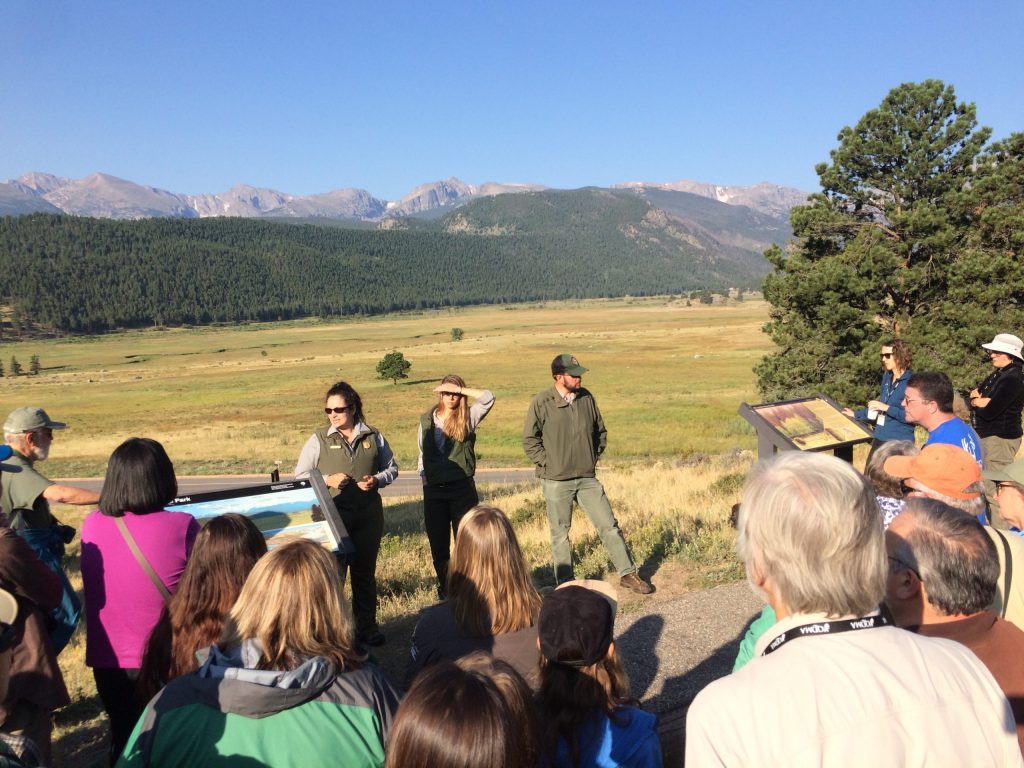Recently I was in Colorado and visited Rocky Mountain National Park. The park was created in 1915 where elk were reintroduced just a few years prior to the park’s establishment. There is no hunting allowed and over the next 70 years the elk population grew and grew. The elk now walk downtown through Estes Park, CO.
Then in the late 1970s Colorado’s state wildlife agency reintroduced moose to Colorado. This was somewhat controversial because there were records of moose in Colorado prior to 1900 but it was unclear if these were simply uncommon occurrences of dispersing individuals from the north or they truly represented an established population of animals. Regardless, there are now moose in Rocky Mountain National Park.
But this circle of life story actually revolves around willows, not elk and moose.
Over the past 100 years, the acreage of willows, a wetland shrub, have slowly declined in the park. Willow is an important food source for beaver, elk, moose, and sapsuckers. It also provides nesting cover for a variety of songbirds and helps create quality stream habitat habitat for fish.
It was thought that beavers and elk and moose were simply consuming too much willow.
That’s where sapsuckers fit into this circle.
The red-naped sapsucker likes to drill holes in the willow about 4-5 feet above ground level. They then lap up the sap (and probably eat insects attracted to the sap).
Then a very fiendish participant in this circle of life arrives. The fungus Cytospora chrysosperma is native to Colorado and is transported by almost anything (wind, birds, people). The fungus enters the hole drilled by the sapsucker and as it attacks the willow it prevents the flow of water and nutrients from the roots to the leaves, and vice versa. [We’ve written about something similar here in Pennsylvania]
Usually, this is a good thing. Why? Because willow grow to be 10-15 feet tall. That’s food that is even out of reach of moose (except maybe in winter).
The good thing that happens is the willow stem dies and new shoots erupt from the base of the plant – easily within reach of moose and elk!
A perfect circle! Sapsucker drills holes to lap up sap, fungus invades willow, willow stem dies but regenerates at the base, moose and beaver and elk eat tasty young willow shoots. A win, win, win for everyone (except maybe the willow).
Unfortunately, this circle of life has been broken so that now it’s a spiral of death.
With so many elk and moose on the landscape, in combination with climate change, when the willow stem dies they eat all the shoots and eventually kill the willow plant. And with that the sapsucker loses a sap source, songbirds lose a nesting place, beaver lose a construction material and food source, and fish find a much less hospitable stream.
Not to mention there is much less food for elk and moose.

The dead branches are willow stems killed by a fungus introduced through a hole drilled by a sapsucker. The willow tries to regenerate from the base but moose and elk browsing eventually kills the plant.
The result is a valley of willow and beaver ponds replaced by a stream channel heated by the sun within a meadow of grasses and sedges. The meadow is so dry you can walk across it in sneakers without getting wet.
The park contains mountain lions and black bear, but they are not effective enough predators to control elk and moose populations. Wolves are missing, and hunting is not allowed in the park to take their place.
To demonstrate the effect of herbivory, the park has erected ungulate exclosures. The vegetation response is amazing.

On the left ungulates are excluded from browsing on regenerating willow. On the right sedges and grasses dominate as willow are browsed intensively.
Unfortunately, the exclosures are not a solution, simply a band aid to a problem. Some species benefit, but not all. The exclosures certainly benefit the sapsuckers, nesting songbirds, and fish. But the exclosures mean less food for elk and moose. Over time I suppose the park could move the exclosures, but that will only provide elk and moose food for a limited amount of time. Add on to those problems the effects of climate change.
Humans have certainly found an expensive way to try and restore this circle of life. But I’m not sure we can afford treating the symptom instead of the cause.
This story of a bird, two ungulates, and a fungus reminds me of the challenges of The Deer-Forest Study.
Our circle of life always seems more complicated than we are first led to believe. Such as when Danielle discovered that lower soil pH has resulted in greater cycling of manganese in the forest, of which some plants (especially forbs, such as Indian cucumber root that white-tailed deer love to eat) seem to be very sensitive. Another broken circle.
Perhaps sad stories, but when we begin to understand how the circle of life is stitched together we then have an opportunity to find a solution to a problem we may have created.
-Duane Diefenbach
If you would like to receive email alerts of new blog posts, subscribe here.
And Follow us on Twitter @WTDresearch
